2020 下半年教师资格初中英语面试真题及答案
【 1 月 9 日 上 午 】
初 中 英 语 词 汇
一 、 考题 回 顾
二 、 考题 解 析
【 教 案】
My Home
Teaching aims
Students can understand the main idea of the passage and master phrases
about location like “ on the left” , “ on the right” , “ in the center of”
and so on.
Students can learn to describe their homes using the expressions they’
ve learned in the class.
Students can improve their confidence in speaking English after practice
and group work.
Key and difficult points
�
Key point
To understand the main idea of the passage and master the following
phrases: “ on the left” , “ on the right” , “ in the center of” and so on.
Difficult point
To apply the expressions they’ve learned in the class into practice and
improve their confidence in speaking English.
Teaching procedures
Step 1: Warming-up
1. Greetings.
2. Play a short video about the Forbidden City and ask students the
following questions:
Q1: Where is it?
Q2: Whose home is it?
Q3: How do you describe it in English?
3. Then introduce the topic of this lesson naturally through sharing their
answers of the above questions.
Step 2: Presentation
1. Read the passage for students and ask them to find out the main idea.
Then invite a volunteer to share his/ her answer.
2. Ask students the following questions:
Q1: Where is the small garden?
Q2: Where is the kitchen?
Q3: Where is the bathroom?
Later, check the answers with students and write down the three phrases:
“ on the left” , “ on the right” , “ in the center of” on the blackboard.
3. Teach the pronunciation of the phrases and emphasize the liaison
between center and of. Then, teach the meaning of these phrases by using the
picture on the book.
4. Give students more expressions such as “ turn left” , “ tun right”
and “ center around” and emphasize the different part of speech of the words.
Step 3: Practice
1. Fill in blanks
Give students some sentences and ask them to fill in the blanks with the
correct phrases. Then check the answers together.
2. Describe pictures
Give students several pictures and ask students to describe it using the
expressions they’ve just learned. Then choose some students to describe these
pictures in front of the class by playing a game named Hot Potato.
Step 4: Production
Ask students to work in groups of four and discuss the layout of their
homes. 10 minutes will be given for discussion. During their discussion, walk
around the classroom and give help if necessary. Then invite some groups to
share and give some evaluations.
Step 5: Summary and Homework
�
Summary: ask students to recall what they have learned together and then
invite one student to summarize today’ s lesson.
Homework: ask students to make a new design for their homes and try to
describe them in English using the expressions they have learned in this
class.
Blackboard design
Teaching reflection
【 答 辩题 目 解 析 】
1.词 汇 教学 中 词 汇 呈 现的 方 法 有 哪 些?
1. What are the methods of vocabulary presentation in vocabulary
teaching?
【 参 考答 案 】
词 汇 教学 中 词 汇 呈 现至 关 重 要 。 呈现 方 式 主 要 有以 下 几 种 : 图片 呈 现 、 简 笔画
呈 现 、视 频 呈 现 、 动作 呈 现 、 表 情呈 现 、 英 英 释义 呈 现 。 其 中, 对 于 表 示 动作 的 词
汇 , 教师 可 以 利 用 TPR 教 学 法进 行 教 学 , 帮助 学 生 有 效 地学 习 词 汇 。 对于 描 述 心 情
类 的 词可 以 通 过 做 表情 的 方 式 呈 现该 词 。 采 用 哪一 种 呈 现 方 式还 需 结 合 词 汇本 身 和
相 应 的语 境 。
【 Suggested version】
The presentation of vocabulary plays an important part in vocabulary
teaching. We can mainly present vocabulary in class through picture, stick
figure, video, action, facial expression and explanation. To present the
words for action, we can use TPR Teaching Method to carry on the teaching
in the class and help students to learn effectively. To present the words
connected with emotion, we can make facial expressions accordingly. The
specific method should be combined with the vocabulary itself, the context
as well as the features of students.
2.如 何 开展 一 个 好 的 导入 ?
2. How do you make a good warming-up?
【 参 考答 案 】
一 堂 课的 导 入 对 于 整堂 课 来 说 是 至关 重 要 的 。 要做 好 导 入 我 们需 要 保 证 导 入形
式 的 新颖 以 及 导 入 内容 和 新 课 的 关联 度 。 我 们 可以 采 用 歌 曲 、视 频 、 图 片 、故 事 、
自 由 讨论 等 有 趣 的 方式 来 导 入 , 但是 导 入 的 内 容如 果 和 新 课 毫不 相 关 , 那 这个 导 入
就 称 不上 是 一 个 好 的导 入 。 具 体 采用 何 种 导 入 方式 还 得 依 据 素材 内 容 来 定 。在 往 后
的 教 学中 , 我 会 向 有经 验 的 老 师 们学 习 , 不 断 提升 自 己 的 授 课能 力 , 丰 富 导入 形 式
以 提 升学 生 的 学 习 兴趣 。
【 Suggested version】
�
The warming-up of a lesson is crucial to the whole lesson. To make a good
warming-up, we need to ensure that the form of warming-up is novel and the
content is related to the new lesson. We can use songs, videos, pictures,
stories, free talk and other interesting ways to do it, but if the content
is not related to the new lesson, then the warming-up is not a good one. The
specific method of warming-up also depends on the content of the material.
Therefore, in the future, I will learn from experienced teachers to improve
my teaching ability, enrich the forms of warming-up to foster students’
learning interest.
初 中 英 语 听 说
一 、 考题 回 顾
二 、 考题 解 析
【 教 案】
Good friends
Teaching aims
Students can understand the content of the listening material and be more
familiar with the topic of friends.
Students can describe people’ s qualities with some useful expressions
like “ interesting”, “ honest” .
Students will develop their listening abilities of predicting, guessing
the meanings of words according to the context, and catching detailed
information through intensive listening.
Students can foster their confidence of learning English and cultivate
the awareness of cherishing friendship in their daily life.
Key and difficult points
Key points
�
To understand the content of the listening material.
To master some key words related to people’ s qualities and improve their
listening material.
Difficult point
How to cultivate the awareness of cherishing friendship.
Teaching procedures
Step 1: Warming-up
1. Greetings.
2. Let students enjoy a song named Auld Lang Syne and ask them: “ what’
s the topic of this song. For example:
Should auld acquaintance be forgot.
And never brought to mind.
Should auld acquaintance be forgot.
And auld lang syne!
Invite some students to share their answers and tell them the song is
about friendship. Then lead in today’ s topic.
Step 2: Pre-listening
Show a picture of 2 people who are talking. Based on the picture, give
students a task to make a prediction: “ what are the dialogue about?” and
collect their answers like: Maybe they are new friends of each other and have
a talk? Maybe they are ready to introduce news friends to each other? and
so on.
Step 3: While-listening
1. Extensive listening
Read the conversation for students and ask them to find out the main idea
to check their predictions. Then write the topic on the blackboard.
2. Intensive listening
Ask students to listen to the tape for the second time and get some
detailed information to answer the following two questions:
Q1: What makes good friends?
Q2: Why these qualities make good friends?
Then lead students to fill in the chart on the blackboard.
Encourage students to check the meaning of some key words, such as
“ honest” and “ interesting” by referring to the context. Then invite some
volunteers to share their findings and make a supplement. Later, show a
sentence: “ I think good friends should be...” and explain the usage of this
sentence.
3. Ask students to read after the tape and pay attention to the intonation
and pronunciation.
Step 4: Post-listening
1. Role play:
Ask students to work in pairs to do a role play according to the
conversation. They have 5 minutes to prepare. Then invite some groups to share
and explain
�
2. Survey
Give students 5 minutes to have a survey in groups of four. Students need
to introduce their best friends to group members by using the target
expressions they have mastered in this class. During the survey, the teacher
will walk around the classroom and give some advice. Later, some
representatives will be invited to share their results. Positive evaluation
will be given.
Step 5: Summary and Homework
Summary: ask students what they have learned today and make a summary
together. Meanwhile, ask students to cherish friendship in their daily life.
Homework: ask students to search other qualities which good friends need
and share next class.
Blackboard design
Teaching reflection
【 答 辩题 目 解 析 】
1.你 的 教学 难 点 是 什 么?
1. What’ re your difficult points?
【 参 考答 案 】
感 谢 您的 提 问 , 教 学难 点 包 括 学 生难 理 解 的 方 面和 老 师 难 解 释的 方 面 。 掌 握清
楚 课 堂的 重 难 点 有 利于 帮 助 老 师 抓住 重 点 , 突 破难 点 , 从 而 提高 教 学 效 果 。
本 节 课的 教 学 难 点 主要 有 以 下 几 点:第 一 ,如 何 提高 学 生 学 习 英语 的 自 信 心 ;第
二 , 怎么 培 养 学 生 珍惜 友 谊 的 情 感。 在 这 堂 课 中, 我 通 过 加 强与 学 生 的 互 动以 及 给
与 学 生鼓 励 性 的 评 价来 提 高 学 生 自信 心 ,并 在 post 与 小 结环 节 通 过 升 华主 题 来 提 醒
学 生 珍惜 身 边 的 友 谊。
我 相 信, 通 过 这 些 活动 , 教 学 难 点取 得 了 一 定 程度 的 突 破 。
【 Suggested version】
Thanks for the question, the teaching difficult points including two
aspects. For teachers, that is the part hard to explain. For students, that
is part hard to understand. It is helpful for teachers to have a clear
understanding of difficult points. Thus, teachers can grasp the key points,
break through the difficult points and improve teaching effect.
The difficult points in this class are as follows: First, how to develop
the confidence of learning English; Second, how to cultivate the awareness
of cherishing friendship. In this class, through the interact with students
and positive evaluation, students’ confidence will be developed. Besides,
�
in post-listening and summary part, I remind students to cherish friendship
around them.
I believe, through these activities, the difficult points must have been
broken through to some extent.
2.你 是 如何 设 计 这 堂 听说 课 的 ?
2. How do you design the listening class?
【 参 考答 案 】
这 堂 课, 我 主 要 采 取了 PWP 的 教 学模 式 。
导 入 环节 通 过 一 首 与友 谊 相 关 的 歌曲 将 学 生 吸 引到 课 堂 当 中 来。 听 前 环 节 通过
预 测 进一 步 激 发 学 生的 学 习 兴 趣 ,并 将 学 生 带 到文 本 的 情 境 中去 。 听 中 环 节通 过 设
计 由 浅入 深 的 问 题 ,帮 助 学 生 循 序渐 进 的 理 解 整段 对 话 。 同 时, 学 生 还 能 够根 据 上
下 文 猜测 词 义 。 听 后环 节 通 过 角 色扮 演 加 深 学 生对 文 本 的 理 解, 同 时 锻 炼 其口 语 表
达 能 力。 小 结 与 作 业帮 助 学 生 回 顾课 堂 重 点 并 进行 情 感 升 华 。
以 上 就是 我 的 教 学 设计 , 谢 谢 。
【 Suggested version】
I have adopted the lesson design of PWP module in this class.
In warm-up, I draw students’ attention by singing a song named Auld Lang
Syne. For pre-listening, prediction can cultivate their interest further and
bring them into the situation of context. The while-listening helps students
comprehend the whole conversation by designing different complex questions
and tasks. At same time, students will be able to guess the meaning of words
according to the context. As for post-listening, role play deepens the
understanding of the conversation. What’ s more, it can practise their spoken
English. Summary and homework can help students review the key points and
sublimate emotion.
That’s my teaching design. Thanks.
初 中 英 语 语 音
一 、 考题 回 顾
�
二 、 考题 解 析
【 教 案】
How’ s the weather?
Teaching aims
Students can master the stress of syllables of some certain words, such
as “ Boston” , “ Moscow” , and “ Toronto” .
Students can know how to pronounce the words accurately in their future
study.
Students will strengthen their abilities to draw inferences about other
cases from one instance.
Students can realize the significance of pronunciation in English study.
Key and difficult points
Key point
To master the rules of word stress and pronounce the given words
accurately.
Difficult point
To apply the rules of word stress flexibly and accurately in daily life.
Teaching procedures
Step 1: Warming-up
1. Daily greetings.
2. Let the students watch a video clip spoken by Dr. Tedros Adhanom
Ghebreyesus, Director-general of WHO, in Tsinghua University during the
outbreak of COVID-19, and ask them how they feel about his speech. After that,
have a conversation with students like this:
“ As we can see in the video, Dr Tedros calls on all people to contribute
their own efforts to promote global solidarity and safeguarding the common
�

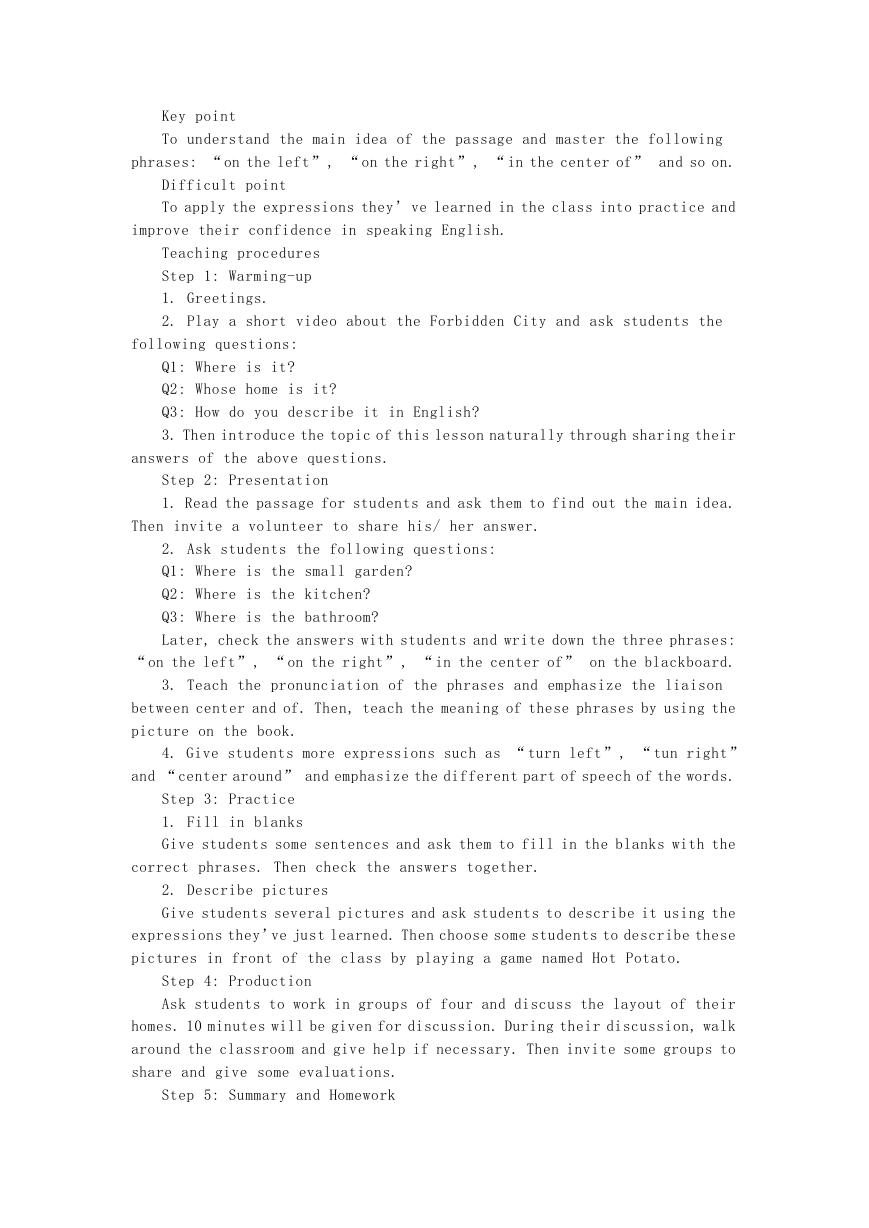
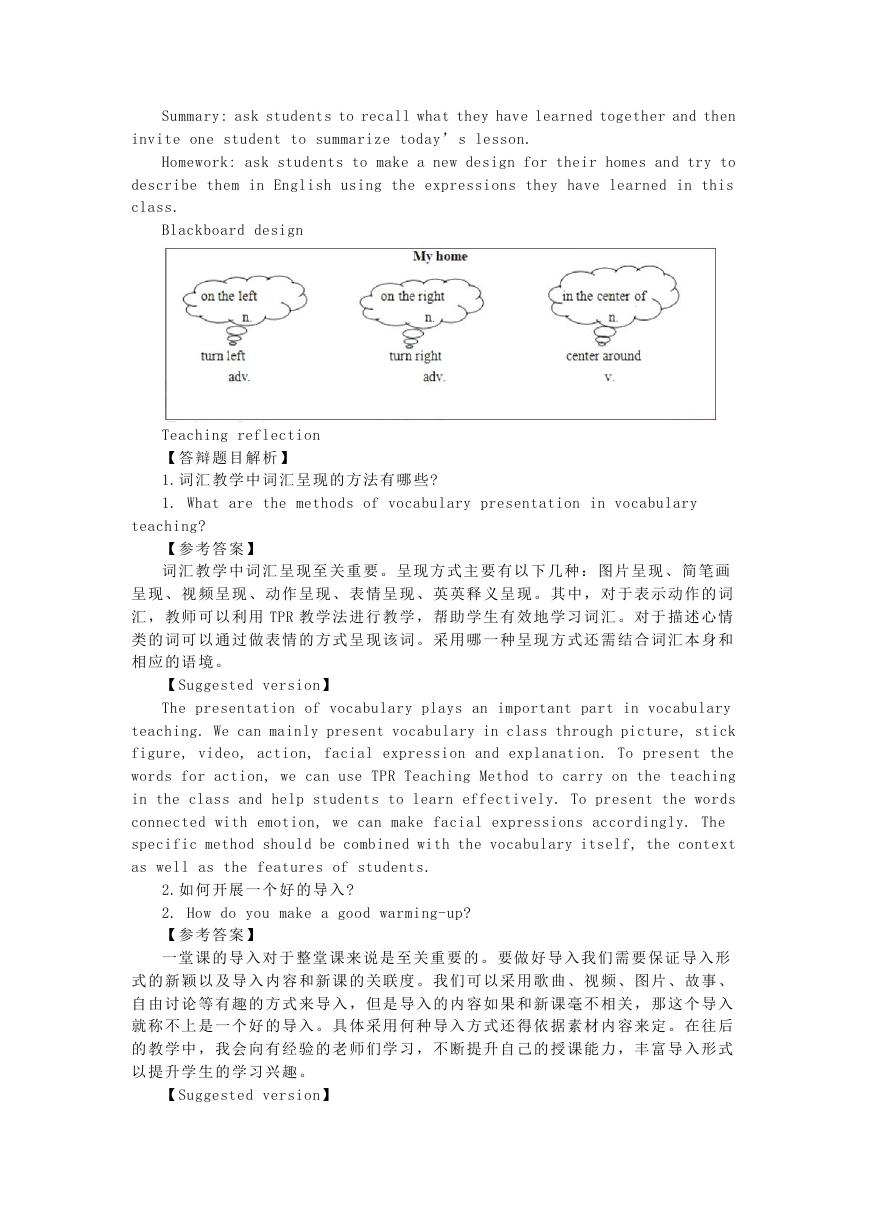
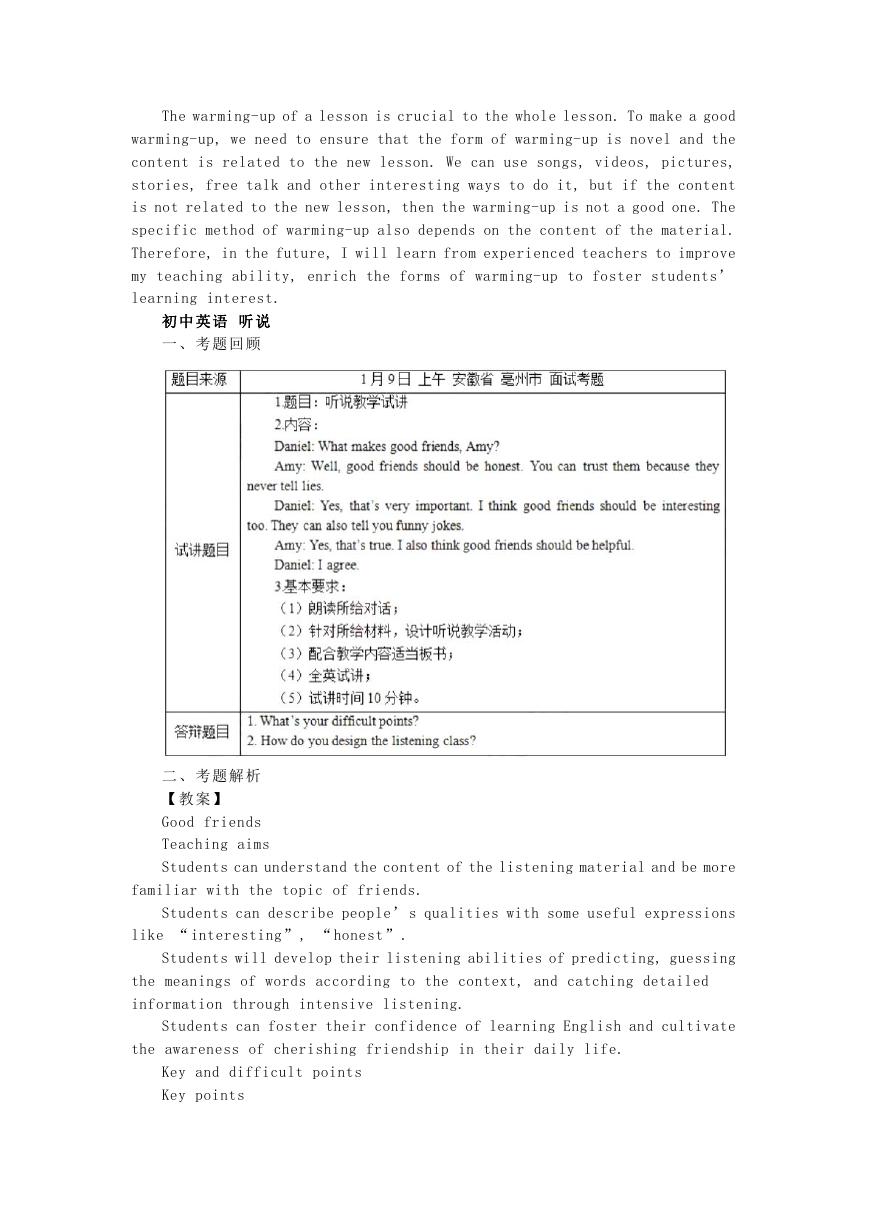
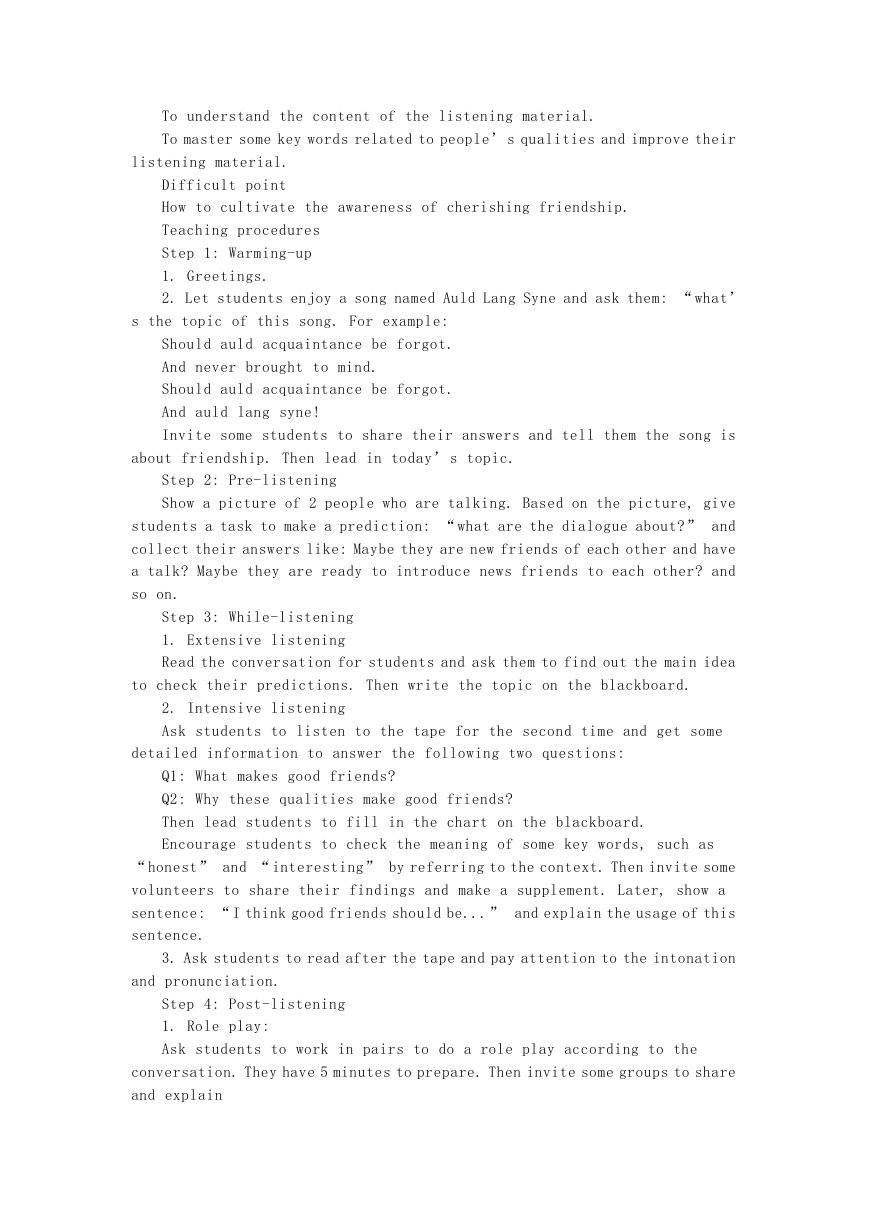
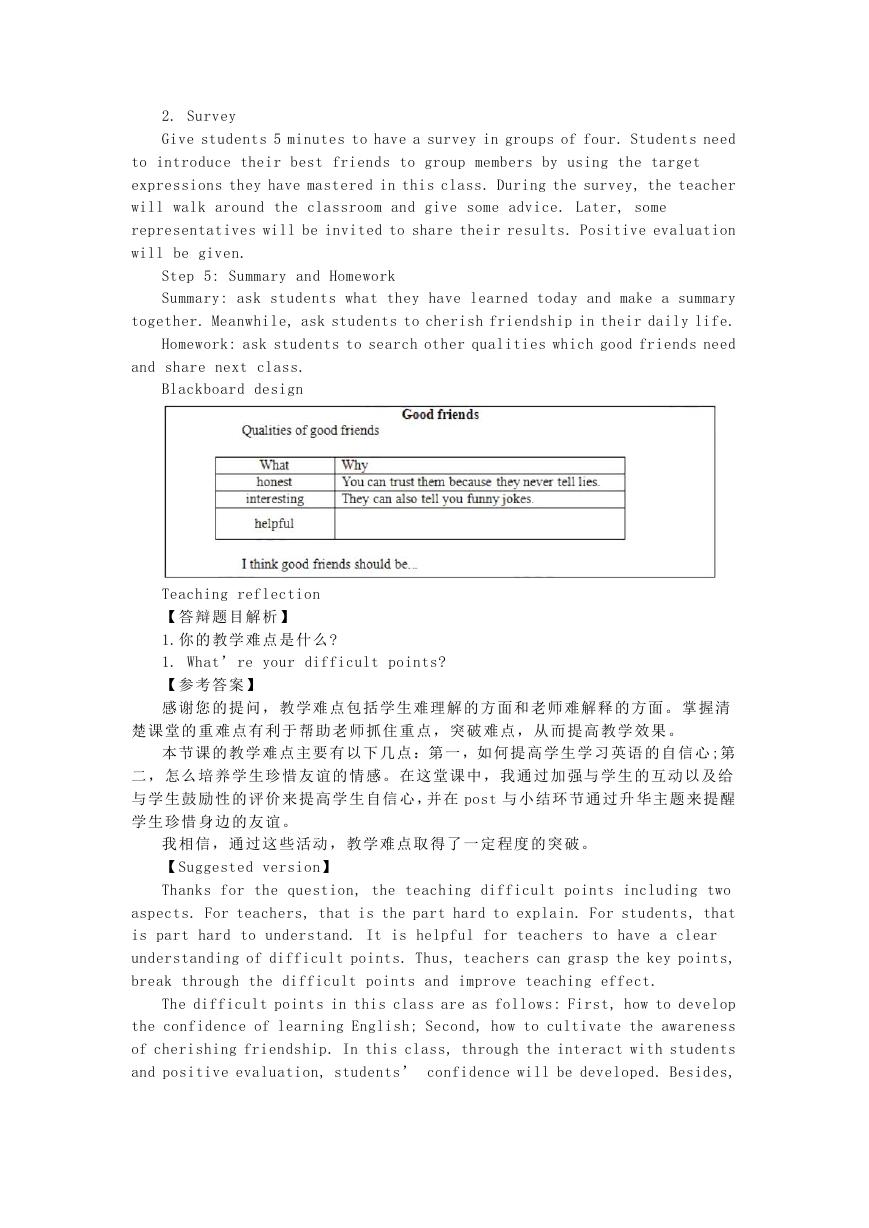










 2023年江西萍乡中考道德与法治真题及答案.doc
2023年江西萍乡中考道德与法治真题及答案.doc 2012年重庆南川中考生物真题及答案.doc
2012年重庆南川中考生物真题及答案.doc 2013年江西师范大学地理学综合及文艺理论基础考研真题.doc
2013年江西师范大学地理学综合及文艺理论基础考研真题.doc 2020年四川甘孜小升初语文真题及答案I卷.doc
2020年四川甘孜小升初语文真题及答案I卷.doc 2020年注册岩土工程师专业基础考试真题及答案.doc
2020年注册岩土工程师专业基础考试真题及答案.doc 2023-2024学年福建省厦门市九年级上学期数学月考试题及答案.doc
2023-2024学年福建省厦门市九年级上学期数学月考试题及答案.doc 2021-2022学年辽宁省沈阳市大东区九年级上学期语文期末试题及答案.doc
2021-2022学年辽宁省沈阳市大东区九年级上学期语文期末试题及答案.doc 2022-2023学年北京东城区初三第一学期物理期末试卷及答案.doc
2022-2023学年北京东城区初三第一学期物理期末试卷及答案.doc 2018上半年江西教师资格初中地理学科知识与教学能力真题及答案.doc
2018上半年江西教师资格初中地理学科知识与教学能力真题及答案.doc 2012年河北国家公务员申论考试真题及答案-省级.doc
2012年河北国家公务员申论考试真题及答案-省级.doc 2020-2021学年江苏省扬州市江都区邵樊片九年级上学期数学第一次质量检测试题及答案.doc
2020-2021学年江苏省扬州市江都区邵樊片九年级上学期数学第一次质量检测试题及答案.doc 2022下半年黑龙江教师资格证中学综合素质真题及答案.doc
2022下半年黑龙江教师资格证中学综合素质真题及答案.doc